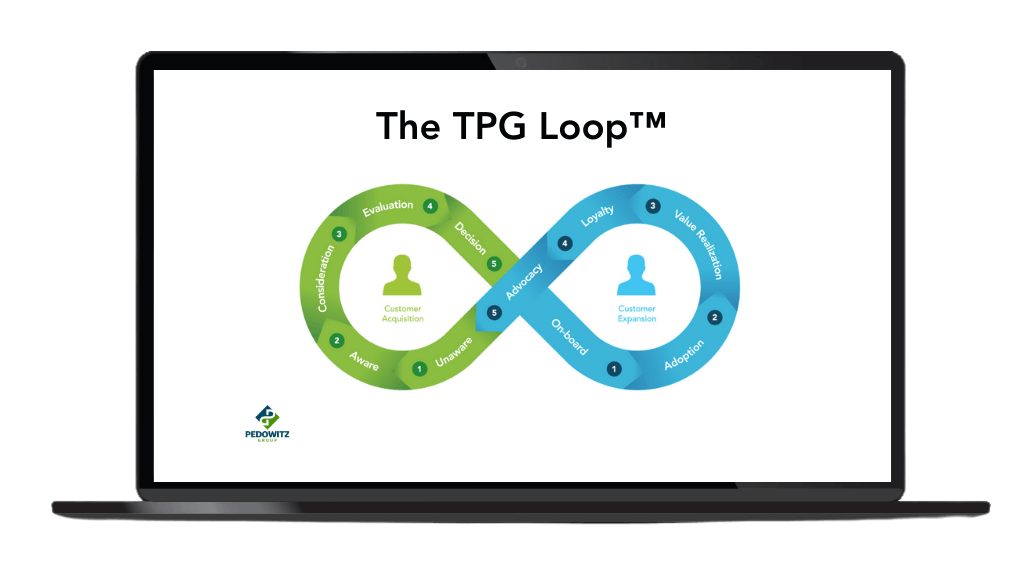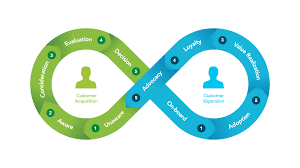How Does HubSpot’s “Evolve” Stage Compare to TPG’s Continuous Improvement Cycle?
Both aim to convert learnings into lift. HubSpot’s Evolve improves messaging and distribution; TPG’s Loop turns results into governance, funding, and next-cycle plays—all on one scorecard.
HubSpot’s “Evolve” focuses on iterating content, targeting, and channels based on performance data from the looped campaign cycle. TPG’s continuous improvement widens that iteration to the whole revenue system—governance, SLAs, handoffs, plays, and budget. In practice, Evolve refines tactics, while TPG’s Loop converts results into decisions (start/stop/scale) tied to a shared revenue scorecard.
Where They Overlap
Mini Diagrams
Use these visuals to explain how stage-specific content and the overall Loop work together in a continuous cadence.


How They Differ—and How to Combine Them
HubSpot’s Evolve is the optimization end of the Loop Marketing method: use performance data to improve messaging, creative, audiences, and channels, then redeploy. It excels at content and distribution iteration—keeping experiments fast and grounded in real engagement.
The Pedowitz Group’s continuous improvement expands the aperture beyond campaigns. It bakes iteration into the operating system: governance, SLAs and dispositions for handoffs, stage exit criteria, enablement updates, and budget re-allocation. Results roll up to a board-safe revenue scorecard (sourced/influenced pipeline, velocity, win rate, expansion), reviewed in a revenue council that decides what to start, stop, or scale.
The winning move is both: run Evolve to sharpen program-level performance, and use TPG’s Loop to change the system itself. That’s how iteration compounds—better plays, better handoffs, and better funding decisions every cycle.
Side-by-Side Comparison
| Dimension | HubSpot “Evolve” | TPG Continuous Improvement | How to Combine |
|---|---|---|---|
| Purpose | Optimize content, audiences, and channels. | Improve the entire revenue system (plays, SLAs, governance, funding). | Run fast creative tests, then adjust process and investment based on results. |
| Scope | Program/campaign level. | Cross-functional (marketing, sales, CS, ops, finance). | Feed program KPIs into a revenue council for system changes. |
| Cadence | Weekly tweaks; monthly rollups. | Monthly council; quarterly planning loops. | Weekly Evolve updates → monthly Loop decisions. |
| Inputs | Engagement & conversion metrics. | Pipeline velocity, win rate, SLA compliance, expansion. | One taxonomy; Datasets and dashboards used by both views. |
| Outputs | New variants, refined targeting, budget shifts within programs. | Play changes, handoff rules, enablement updates, budget re-allocation. | Publish a single scorecard; document start/stop/scale actions. |
| Owners | Marketing + creators. | Revenue council (execs + RevOps). | Creators propose; council approves systemic changes. |
| KPIs | CTR, CPL, MQL/MQA lift, cost per opp. | Velocity, win rate, sourced/influenced pipeline, NRR. | Tie program lift to sales impact and cash. |
| Guardrails | Experiment design; UTM discipline. | One scorecard; stage exit criteria; SLAs. | Lock definitions; keep totals and credit consistent. |
Frequently Asked Questions
Turn Iteration into Compounding Revenue
We’ll wire Evolve-ready campaigns, a governed Loop, and one scorecard—so every improvement changes outcomes, not just charts.
Implement My Continuous Loop